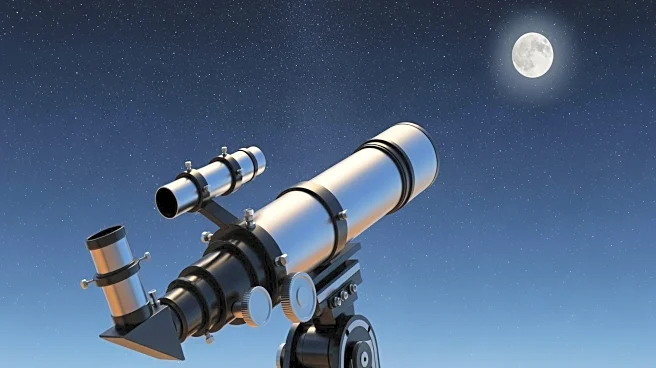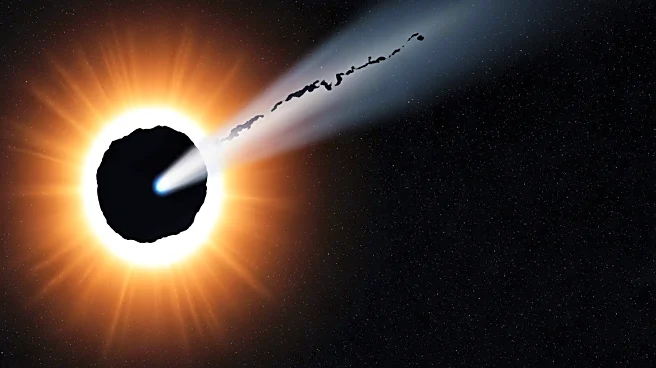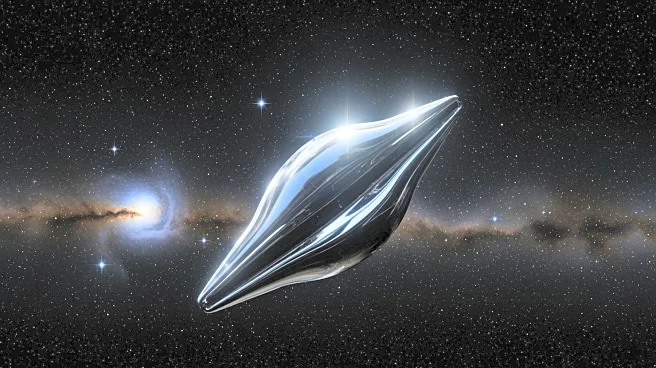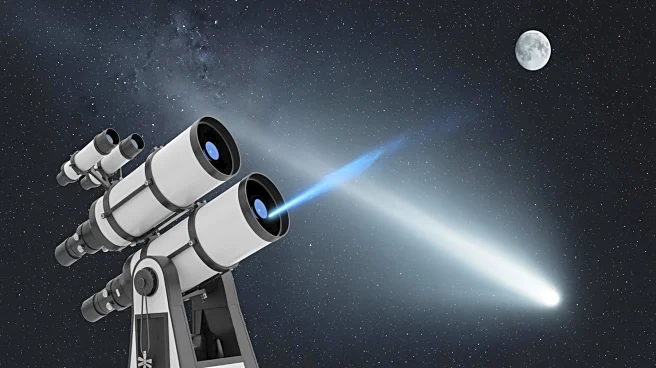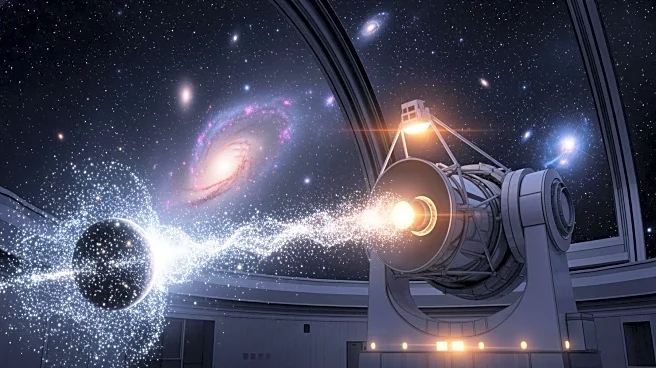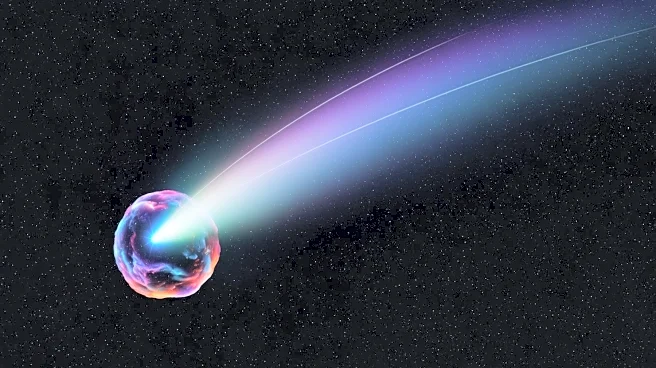What's Happening?
Astronomers are closely studying 3I/ATLAS, an interstellar object that has entered our solar system, sparking interest due to its unusual speed and trajectory. The object, believed to be a comet, is moving
at a velocity that suggests it may have received a gravitational boost during its journey. Recent studies have attempted to trace its path over the last 10 million years to determine if it has passed close enough to any celestial bodies to gain such a boost. Additionally, researchers have estimated its age to be between 7.6 and 14 billion years, based on its speed and the assumption that it has not received any significant gravitational boosts. This age estimation is significant as it suggests the object could be rich in water ice, which will be tested as it approaches the sun in the coming weeks.
Why It's Important?
The study of 3I/ATLAS is crucial for understanding the characteristics and origins of interstellar objects. Its age and composition could provide insights into the early universe and the processes that govern the movement of such objects. If the object is indeed full of water ice, it could confirm theories about the composition of ancient celestial bodies. This research also highlights the challenges and limitations faced by astronomers in studying objects that cannot be directly experimented upon, emphasizing the importance of theoretical models and indirect observations in the field of astronomy.
What's Next?
As 3I/ATLAS approaches the sun, astronomers will observe whether it releases water vapor, which would support the hypothesis about its age and composition. If it does not, researchers will need to reassess their models and consider alternative explanations for its characteristics. The findings could influence future studies of interstellar objects and contribute to our understanding of the solar system's interactions with such bodies.
Beyond the Headlines
The investigation into 3I/ATLAS also touches on broader themes in astronomy, such as the balance between precision and uncertainty in scientific research. The ability to estimate the age and trajectory of an object over billions of years demonstrates the advancements in astronomical techniques, while also highlighting the inherent uncertainties in such long-term predictions. This case exemplifies the scientific community's cautious approach to extraordinary claims, such as the possibility of extraterrestrial origins, and the importance of evidence-based conclusions.
